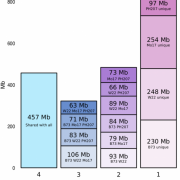
Transposable elements contribute to dynamic genome content in maize (bioRxiv)
Plant Science Research WeeklyTransposable elements (TE) constitute a large percentage of the maize genome. However, traditional studies based on reference genome alignment can result in large fragments that cannot be aligned, which could be due to TE insertions. The de novo assembly of four representative maize inbreds, B73, W22,…
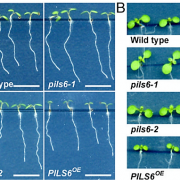
PILS6 is a temperature-sensitive regulator of nuclear auxin input and organ growth (PNAS)
Plant Science Research WeeklyAuxin, a plant hormone and major growth regulator, is fundamental for adaptations to climatic variation in shoots but its role in roots under elevated temperatures is more controversial. PIN-LIKES (PILS) 2, 3 and 5 proteins have previously been identified to restrict nuclear auxin signalling but the…
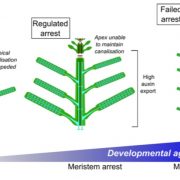
(Auxin) Don't stop me now. Auxin export from proximal fruits drives arrest in competent inflorescence meristems (bioRxiv)
Plant Science Research WeeklyThe control of the beginning and the ending of the reproductive phase in plants are important factors related to seed and fruit production. Almost one century ago, it was noticed that fruit removal delays the floral arrest, and a model was proposed in 1994 by Hensel et al., highlighting the role of fruits…
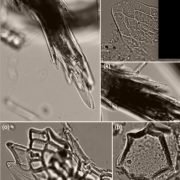
Evolution of phytolith deposition in modern bryophytes (New Phytol) ($)
Plant Science Research WeeklyWhen monosilicic acid is present in the soil, many plants absorb it through their roots and precipitate rigid silica aggregates known as phytoliths. Phytolith deposition has been observed in all major groups of vascular plants, however the patterns of deposition in bryophytes are comparatively under…
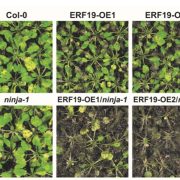
ERF19 buffers Arabidopsis pattern-triggered immunity (J Exp Bot)
Plant Science Research WeeklyTo fight off invading pathogens, higher plants such as Arabidopsis are intrinsically programmed with a subset of defense responses known as pattern-triggered immunity (PTI). However, excessive defense responses may hamper plant’s normal growth, so fine-tuning PTI is important for plant survival. Recently,…
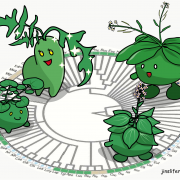
Plant Science Research Weekly: February 22
WWR Full PostReview: Cytokinin – A developing story ($)
With its diverse chemical structures, the phytohormone cytokinin is significant from embryogenesis to the maturation of plants. In this review, Wybouw and De Rybel highlight in detail cytokinin signaling in multiple plant developmental process including…

Careers in Plant Synthetic Biology Part III: Using and Running a DNA Foundry
Blog0 Comments
/
In part III of the blog series looking at future directions in Plant Synthetic Biology, I caught up with members of the Earlham DNA Foundry to find out about how anyone in research might benefit from a Foundry as well as careers in managing facilities and requirements for wet-lab positions.
A…

Careers in Plant Synthetic Biology Part I: Introducing the modern steam mill
Blog
This post is part of a series looking at careers in Plant Synthetic Biology leading up to the 1st ASPB Plant SynBio meeting on the 7-9 Aug 2019, in San Jose CA. Follow the PlantSynbio2019 Twitter account for updates about the event.
Looking back 200 years in time to the Northwest…
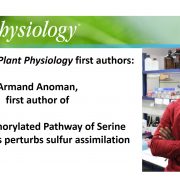
Recognizing Plant Physiology first author: Armand Anoman
Plant Physiology, Plant Physiology: Author ProfilesArmand D. Anoman, first author of The Phosphorylated Pathway of Serine Biosynthesis perturbs sulfur assimilation
Current Position: Postdoctoral researcher at ERI BIOTECMED, University of Valencia, Spain
Education: PhD in biotechnology, plant biology department, University of Valencia, Spain
Non-scientific…

